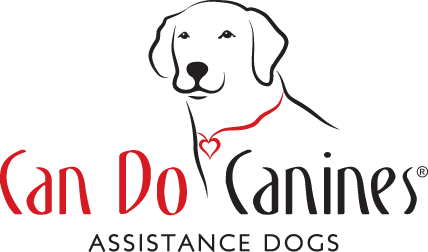Cue: Settle
The dog will lay down, flip onto a hip, and rest on their side (lateral recumbent), with their head and shoulder lying on the ground. The dog should allow an exam, grooming, and petting while in this position. "Stay" is implied; requires release or next cue.
Impact on the dog's future work:
The "settle" cue is not a cue for the dog to relax or do nothing but a way for clients to examine their dogs easily. Some dogs may need to learn to settle on a raised surface to allow the client easier access to them.
Cue: Shake
The dog will place a front paw into the palm of their handler. The dog should know how to give both front feet to a handler, and be comfortable having each foot gripped or moved. This behavior may be used for greetings in public, as well as general care.
Impact on the dog’s future work:
"Shake" can be used to allow the client to look at the dog's feet or nails. It’s also one of the tricks for the Autism Assist Dogs. It can help our clients with autism interact with people and show off what tricks their dog knows.
Cue: Out
The dog will move out of a predefined space, such as a bathroom or kitchen and wait to re-enter until released.
Impact on the dog's future work:
"Out" is an essential cue for safety reasons. Some of the reasons a client may use "out" include if the client drops medication or if they need to move the dog out of the way to avoid tripping over them. It is important that the dog stays in the new location until they are cued to come back into the area.
Cue: Step
The dog places its front feet onto an elevated surface such as a curb, perch, or stair.
Impact on the dog's future work:
"Step" is an important cue for the safety of our clients. Some of our clients may need to take steps or curbs very slowly. The dog needs to stay in position next to the client and take steps or curbs slowly and controlled while maintaining position next to the client.




